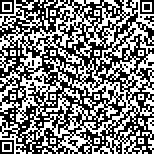| 引用本文: |
刘婉琳,付敏,夏兰,李林,龙专.改良俯卧位通气在成人急性呼吸窘迫综合征患者的应用[J].湖南中医药大学学报,2021,41(7):1120-1125[点击复制] |
|
| |
|
|
| 本文已被:浏览 2832次 下载 898次 |
| 改良俯卧位通气在成人急性呼吸窘迫综合征患者的应用 |
| 刘婉琳,付敏,夏兰,李林,龙专 |
| (中南大学湘雅二医院临床护理教研室, 湖南 长沙 410011;中南大学湘雅二医院呼吸与危重症医学科重症监护病房, 湖南 长沙 410011;湖南中医药大学, 湖南 长沙 410208) |
| 摘要: |
| 目的 观察改良俯卧位通气在急性呼吸窘迫综合征(acute respiratory distress syndrome,ARDS)患者中的应用效果。方法 选取2018年7月1日至2019年7月1日收治我院呼吸重症监护室接受俯卧位通气治疗的ARDS患者66例,采用随机数字表法分为对照组和观察组各33例,分别采取传统俯卧位通气与改良俯卧位通气,改良俯卧位通气在传统俯卧位通气基础上采用翻身床调整至头高脚低30°,左、右30°倾斜交替进行,每个体位维持2 h,16 h后改为仰卧位。比较两组患者血气指标、血流动力学指标、压力性损伤、胃内容物反流误吸发生率的差异。结果 俯卧位通气16 h后观察组与对照组血气pH值、二氧化碳分压、氧分压、氧合指数、心率、平均动脉压、中心静脉压对比,均无统计学差异(P>0.05);对照组36.36%(12/33)患者发生压力性损伤,其中Ⅰ期9例,Ⅱ期3例;观察组9.09%(3/33)发生了Ⅰ期压力性损伤,2组患者压力性损伤的发生率和分期比较,差异均有统计学意义(P<0.05)。对照组24.24%(8/33)、观察组6.06%(2/33)患者发生了胃内容物反流误吸,差异具有统计学意义(P<0.05)。结论 改良俯卧位通气对ARDS患者血气及血流动力学指标无不良影响,能够降低压力性损伤及胃内容物反流误吸的发生。 |
| 关键词: 改良俯卧位通气 急性呼吸窘迫综合征 压力性损伤 误吸 血气分析 血流动力学 |
| DOI:10.3969/j.issn.1674-070X.2021.07.026 |
| 投稿时间:2021-02-22 |
| 基金项目:湖南省科技厅项目(2019JJ40218)。 |
|
| Clinical Value of Modified Prone Position Ventilation in Adult Patients Acute Respiratory Distress Syndrome |
| LIU Wanlin,FU Min,XIA Lan,LI Lin,LONG Zhuan |
| (Department of Clinical Nursing of the Second Xiangya Hospital of Central South University, Changsha, Hunan 410011, China;Department of Pulmonary and Critical Care Medicine of Second Xiangya Hospital of Central South University, Changsha, Hunan 410011, China) |
| Abstract: |
| Objective To observe the effect of modified prone position ventilation in the treatment of patients with acute respiratory distress syndrome (ARDS). Methods 66 patients patients with ARDS who required prone position ventilation in the respiratory intensive care unit (RICU) from July 1 2018 to July 1 2019 were included in our study. By random number table method, the patients were randomly divided into the control group (n=33) and the intervention group (n=33). Traditional prone ventilation and improved prone ventilation were adopted, respectively. In the improved prone ventilation, on the basis of the traditional prone ventilation, the head was adjusted to 30° low by turning over the bed, and the left and right 30° inclined alternatively. Each position was maintained for 2 hours, and the latter was changed to supine position 16 hours later. Blood gas index, hemodynamics index, incidence of pressure injury and rate of gastric contents regurgitation and aspiration were compared. Results There was no significant difference in blood gas pH value, PaCO2 value, PaO2, PaO2/FiO2, heart rate, mean arterial pressure, central venous pressure between the observation group and the control group (P>0.05) after 16 hours of prone ventilation. 36.36% (12/33) of the patients developed pressure injuries were found in the control group, including 9 patients in stage Ⅰand 3 patients in stageⅡ. However, 9.09% (3/33) patients were found in intervention group in stage Ⅰpressure injuries. There were statistical differences in the incidence of pressure injury and stages between the two groups (P<0.05). The incidence of gastric contents regurgitation and aspiration was 24.24% (8/33) in the control group while 6.06% (2/33) in intervention group, and the difference was statistically significant (P<0.05). Conclusion The application of modified prone position ventilation has no effect on blood gas indexes, hemodynamic indexes, but can reduce the incidence of pressure injury and gastric contents regurgitation and aspiration. |
| Key words: modified prone position ventilation acute respiratory distress syndrome pressure injury aspiration blood gas analysis hemodynamics |
|

二维码(扫一下试试看!) |
|
|
|
|




